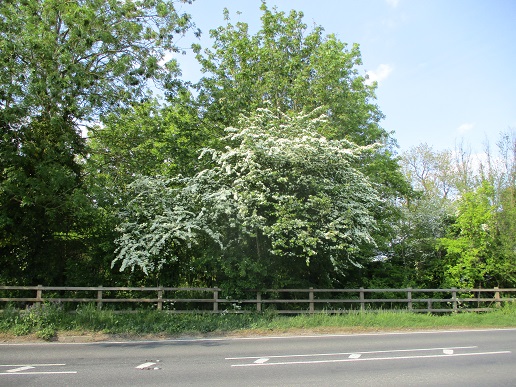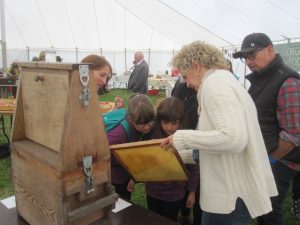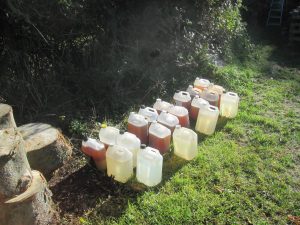I have had two swarm calls so far but they were only casts. This is a small secondary swarm headed by a virgin queen. They are bees never-the-less and by uniting them I have recouped one of my colony losses. They were treated with 24 hours of Apivar at the same time as hiving to knock down any varroa which had hitched a ride.
The girls have been foraging for oil-seed-rape honey but the nectar flow wasn’t as strong as I’d hoped due to the continual dry weather. This was also accompanied by foraging for hawthorn nectar on the may blossom. This is a rare honey which changes the aroma of the rape honey and crystallises very coarsely.

Queen cells had started appearing so now was the time to start making nucleus colonies to replace my winter losses. One QC in hive 3 was used to start a nucleus but the girls in their wisdom tore it down. A week later they had made 6 emergency queen cells.
One hive made three beautiful queen cells so I established another nucleus and gave the third cell to the other nucleus with the emergency cells.
The colony making the queen cells has not made any more so no need to do an artificial swarm.
During the CV lockdown, the road passing the apiary is no longer a tunnel of air pollution so the bees can can forage right up to the roadside.
Another lockdown effect that we have noticed is that without the noise pollution we can hear the whole garden humming.
On 12th of May, there were bees all round the garden pond so I knew the rape had finished. In the absence of nectar to fan for cooling and also thirst quenching they had resorted to water. I put clearer-boards on early next morning so I could do the first extraction the following day.
A second brief extraction for just two tubs and that was that. The June gap had already started a week before the end of May.


